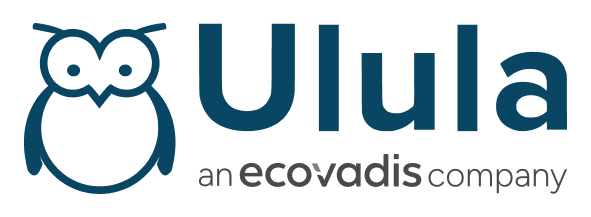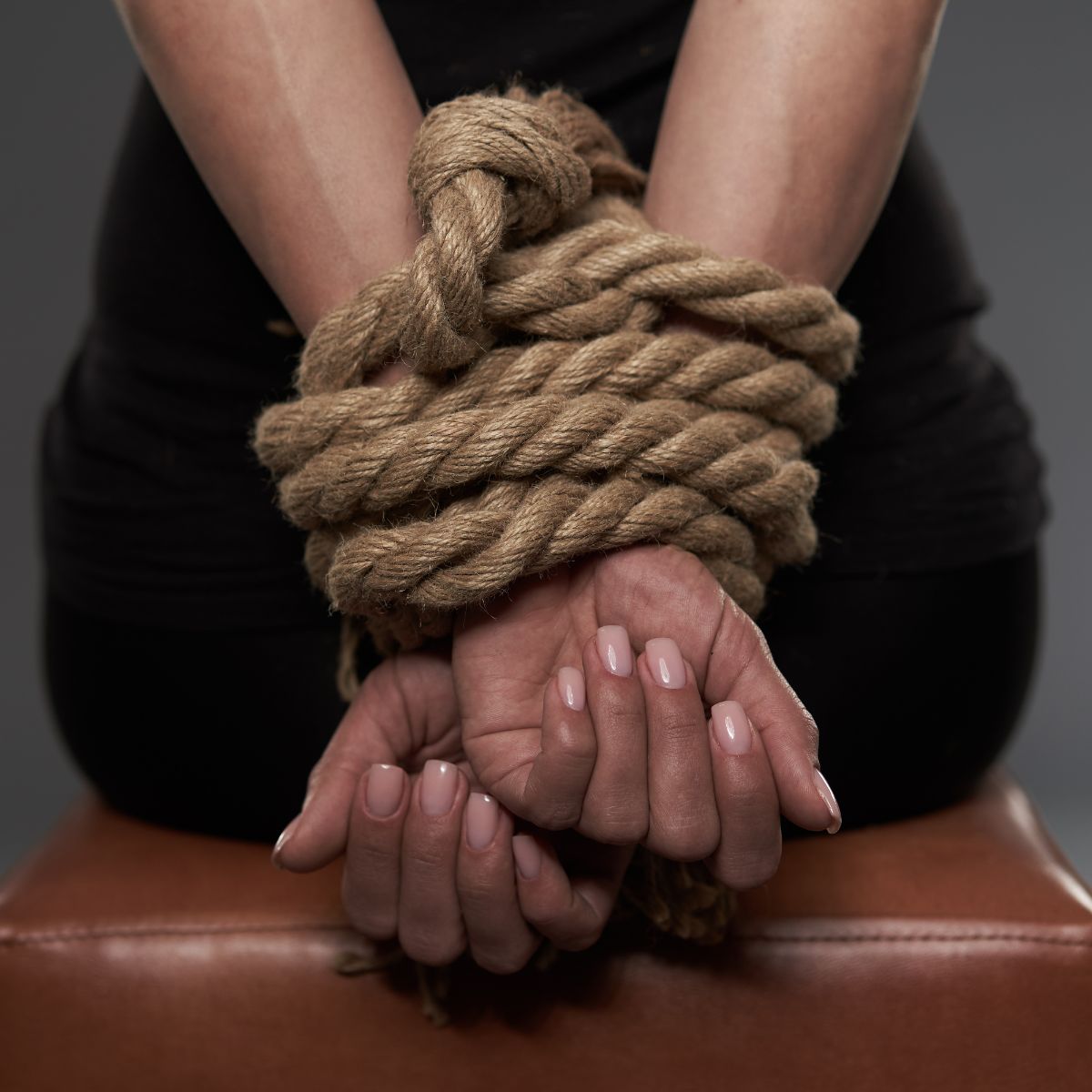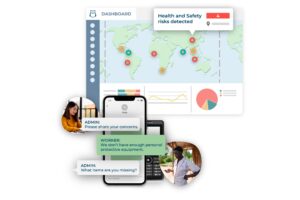The EU’s agreement on a law to ban goods associated with forced labor will have companies around the world scrutinizing their supply chains for indicators of forced labor.
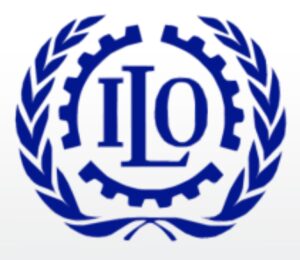
Source: United Nations
According to the International Labour Organization (ILO), 27.6 million people and 3.3 million children suffer under forced labor. European lawmakers want to use the influence of the EU market to tackle forced labor worldwide.
Trade ban measures have already been used to strong effect by the US. To comply, companies must establish rigorous due diligence processes to identify, assess and mitigate the risks of forced labor in their supply chains. If they don’t they risk their own products being stopped at the EU border, unlimited fines, or product bans.
What are the requirements of the EU Forced Labor Regulation
Scope
All companies, including SMEs, will be affected by the law. In 2021, the EU had 31.5 million active companies. Not all companies are happy with this, particularly SMEs, who are wary of supply chain disruption, and who will need support to understand their own risk profile. That’s why the inclusion of SME-specific assistance was added, and why authorities are obliged to be realistic by accounting for the resources and size of companies it may investigate and what they can achieve. 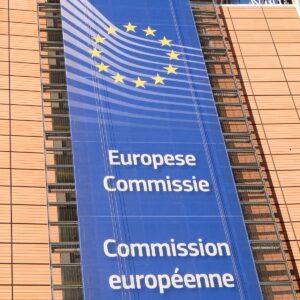
The European Commission (EC) will draw up a list of high-risk economic sectors, products and geographical areas where, for example, state-imposed forced labor exists, or where forced labor is commonplace. Risk factors will determine whether an investigation is opened on a product, region or sector.
What’s crucial to remember is that, if they’re on the list, companies themselves are expected to prove that their goods weren’t produced with forced labor.
In deference to the law’s global implications, distance sales, including eCommerce will be subject to the ban. That means that intermediary services, or online marketplaces, will be responsible for removing listings related to prohibited items. The EU Whistleblower Directive will apply to the Regulation.
Where state-imposed forced labor is concerned, civil society organizations have called for clarifications as to whether special provisions will be made. Companies are advised to pay special attention here, as obtaining information in such areas may be tricky without support.
Enforcement
The EU will establish a Union Network Against Forced Labour Products to coordinate enforcement and decisions. The European Commission will also create A Single Portal for Forced Labor as a centralized location where companies can access, submit and share relevant information.

Enforcement will mostly take place through customs screening, unless the EC decides to carry out their own investigation abroad. Unlike many EU laws of this type, it won’t just be member states’ national customs authorities enforcing the law. The EC will coordinate investigations outside of the EU where it feels there are “reasonable indications” that a product has been made with forced labor.
It’s worth noting that EU authorities are updating the EU customs system, streamlining data entry and deploying AI to help authorities detect and flag potential unsafe or illegal goods that may trigger an investigation.
The European Parliament still needs to formally ratify the law in an upcoming Plenary, most likely in April as this will be the final one before the EU elections. Once the law is formally agreed and transposed into EU law, companies will have two or three years from that date to prepare before the law comes into full effect. The EC is expected to publish guidance around 1.5 years after the law’s transposition.
What Happens When Non-Compliant Products are Found?
If a company is subject to an investigation, authorities will request information on how they identify, prevent, mitigate and remediate the risks of forced labor in their supply chains. Furthermore, companies will be notified fully of the products under investigation and the potential consequences within three days of an investigation decision. Companies will have between 30-60 days to respond.
If forced labor is found, competent authorities can demand the associated goods on the market be withdrawn, disposed of, donated, and recycled without delay, and a prohibition order be put in place to stop any trading of said products. Customs authorities will be expected to seize products that are under investigation, and, where relevant, companies will be expected to remove them from points of sale. Non-compliance can also lead to fines, but it will be down to each Member State to decide the level of those fines.
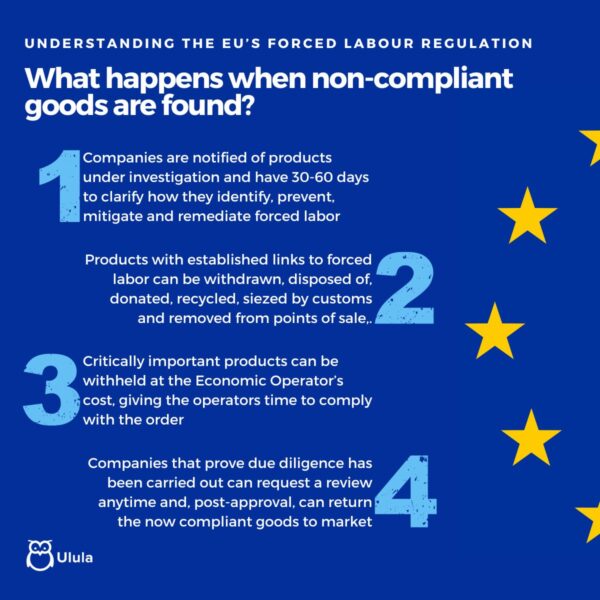
In cases where products may be of critical importance to the Single Market, those products can be withheld at the cost of the economic operator temporarily. It may be the case that such operators are given an amount of time with which to comply with the order.
Only when companies prove their products are free from forced labor can goods be returned to the market. If companies in question have carried out their due diligence and are able to prove those products aren’t made with forced labor, they can request a review of a prohibition decision at any time.
Implement Due Diligence Best Practice With Ulula
Human Rights due diligence implementation is the most effective way to detect and combat forced labor in company supply chains.
Having a due diligence process will not exempt companies from investigation. Companies will need to ensure their due diligence processes prove their products are not made from forced labor.
To implement due diligence effectively, companies should take the following steps.
- Carry out a supply chain forced labor risk assessment
A forced labor risk assessment allows companies to map risk in their supply chain ahead of the law’s adoption, and build the foundations of a risk-based approach to identifying and mitigating forced labor risks. This approach aligns with the risk-based profiling the law uses. - Engage with suppliers
Companies need to act now and get ahead of risks before their shipments reach the EU market. That means mapping out their supply chains and engaging with suppliers to start putting effective forced labor risk identification processes in place.
Ulula’s worker surveys can help companies achieve visibility in an efficient and cost-effective manner
- Engage stakeholders – including workers – in the Due Diligence process
To achieve genuine supply chain visibility on forced labor risks companies need to carry out risk assessments that reach their most vulnerable stakeholders, workers, on the ground. Only 15% of companies currently include workers themselves in their due diligence processes. Ulula’s worker surveys can help companies achieve visibility in an efficient and cost-effective manner by using innovations in communications technology to get anonymous, secure, real-time primary data from workers and stakeholders themselves on internationally recognized forced labor risk indicators. - Establish a two-way worker grievance protocol
Direct-to-worker grievance mechanisms allow officers on the ground to engage with workers directly about issues before they threaten compliance with the ban. Ulula’s grievance management system enables anonymous, secure, and automatically translated two-way communication with workers. These case management systems are already helping the world’s largest companies identify, assess risk, and eradicate forced and child labor from their supply chains and maintain full access to global markets.
For companies that trade on the EU market, forced labor in the supply chain is something they’ll need to get to grips with. Don’t get banned, do good business instead. Call Ulula to implement best practices for identifying and mitigating forced labor risks in your supply chain and comply with the Forced Labor Regulation now.
